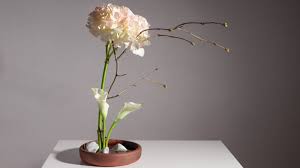Just about everything associated to Ikebana brings people closer to nature, from the method of flower arranging and carefully selecting which leaves and blossoms to use to the concept that unites the components into one organized floral art.
In Japan, were originally ikebana arrangements comes, the deliberate, artistic method of reviving chopped stems, branches, roots, leaves, and flowers by organizing them into ikebana vases or other suitable containers has been practiced for seven centuries. Since then, the practice has developed into a form of Japanese art of ikebana, which derives from the Japanese terms ike, which means “alive,” and bana, which means flowers. Ikebana is the Japanese art term for the practice floral arrangements and reviving of dead flowers or making flowers alive longer, which is a more accurate translation. In this form of art, beautiful lines as well as forms as well as equilibrium are sought after in meditative stillness in accordance with the underlying ideals of minimalism or simplicity.
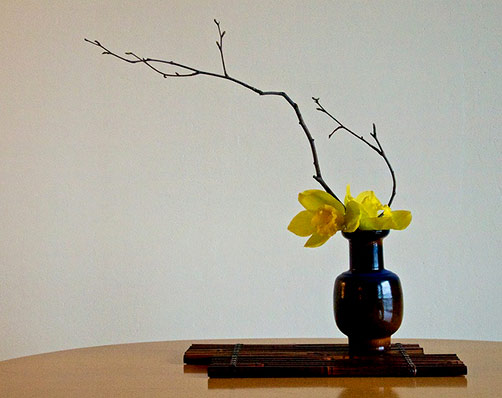
Ikebana offers a brief but healthy break from the hustle and bustle of daily life in these unsettling times, relieving stress from the demands of the day-to-day. You will discover enough about ikebana in the following resource that will allow you to decide whether you wish to pursue it and, if so, what your first few steps should be.
Ikebana Styles Basic Techniques

There are a few basic techniques you must first master before you can start to make your own create arrangements. Whatever your creativity or ingenuity, it will be difficult to develop anything without these techniques. Understanding the environmental elements that will impact your arrangement is also useful. Ikebana lasts the longest in areas where flowers thrive since it is constructed of flowers. It will assist in preserve the flower alive better for longer if there is some dampness. A colder setting is also preferable to a hot one because hotter temperatures hasten the demise of cut flowers. Additionally, make an effort to keep air conditioning, strong sunlight, and smoke away from your accommodations.
Ikebana Arrangement Basic Cutting

Cutting flowers is one of the basic skills you’ll regularly find yourself doing if you practice ikebana. The cutting will be lot more successful if you keep a few things in mind, even though it can appear easy to do. One method that ikebana practitioners frequently employ is known as mizukiri, or a “water cut.”
In order to prevent air from getting inside the flower stem, this technique entails cutting flower stems under water. It’s crucial to establish this practice because it will prolong the life of your flowers. Second, you must ensure that you are cutting the appropriate manner. However, if you’ve chosen a vase for arranging your flowers, you should diagonal cut the stem to ensure the area on each side that was cut is maximized. This will allow water to be absorbed through the stem more easily, prolonging the flower’s life.
Ikebana Arrangement Basic Trimming
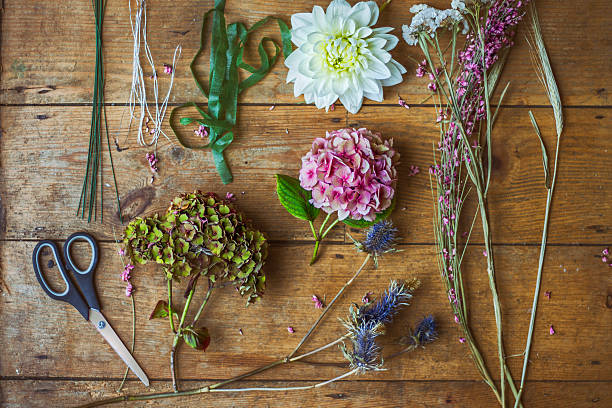
Trimming is another task you’ll encounter while learning ikebana. You should cut away any twigs and little branches that are obstructing this goal given that ikebana is always created with clear lines in mind. It takes talent to do this, but you may substantially improve your arrangement by seeing it as you want it, then progressively removing leaves and tiny branches until there are none left.
Ikebana Arrangement Basic Splinting and Capping
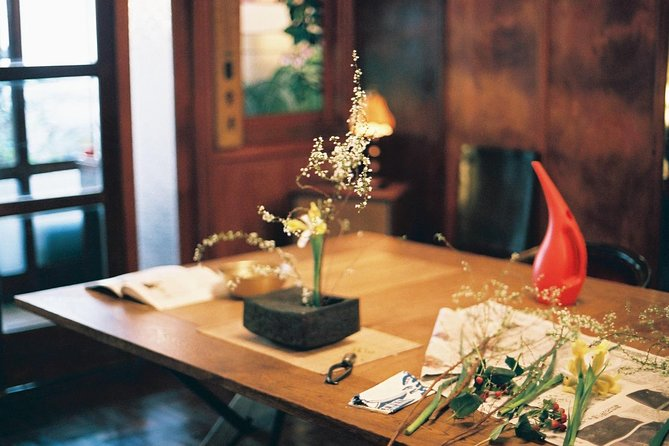
Certain ikebana techniques need the use of a kenzan, although it is not always viable to adhere flowers with thinner stems to it. If this occurs, you can cap your stems to make the process simpler by doing so. You put your thin stem inside a more solid stem, that is subsequently securely fitted onto the kenzan, to make it operate. Using a splint is another way to accomplish the same thing. Simply attach a second, smaller portion of stem to the stem you intend to arrange in this manner. Which approach you favor will rely on your particular preferences and the materials at hand.
Ikebana Arrangement Basic Shaping and Bending
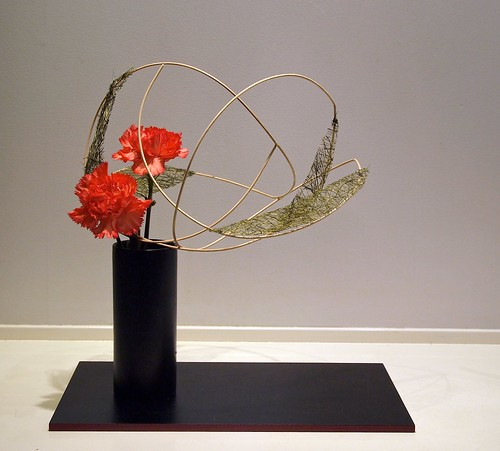
In order to achieve a certain style, branches and stems may not always be in the proper shape. When that happens, you’ll have to bend and mold them whatever you like.
To be able to design your arrangements with assurance, you must learn this skill.
Ikebana Arrangement Basic Cleaning
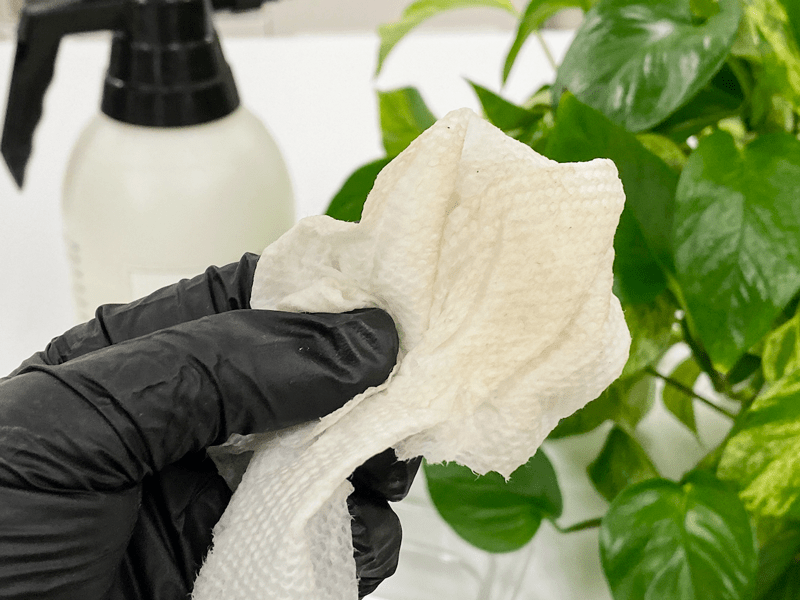
Cleaning your leaves can help ensure that you get maximum enjoyment out of your arrangements, even though it might sound a little excessive when you’re just getting started. Applying a wet paper towel that is wet to your leaves and small branches will offer a freshness that helps to prolong their life a little bit in addition to keeping them looking great.
Ikebana Flower Arrangement Materials you Need:
Continue reading to find out what ikebana tools you need for your own beautiful ikebana arrangement and how you should use them appropriately.
Vase
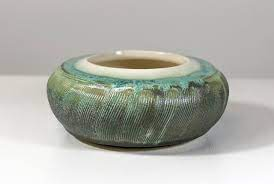
Any sort of vase is able to be chosen, however the arrangement will be greatly impacted by the hue, shape, and measurement of the vase. The arrangement’s fresh materials’ hue is influenced by the vase’s color. Vases in natural or neutral tones complement all flowers, whereas brighter hues can either contrast or accent the materials. Another option is to utilize glass vases, which magnify anything submerged in water.
The size of your arrangement is determined by the size of the vase. As a general rule, the tallest stem in an arrangement should be between 1 and 2 times the vase’s height and width. The height of the tallest stem determines the height of each stem that follows.
Last but not least, the vase’s shape affects how the arrangement is designed.
Pro tips: You can use standard vases and bowls for your arrangements or something unconventional like teapots, recycled vessels, etc.
Hasami
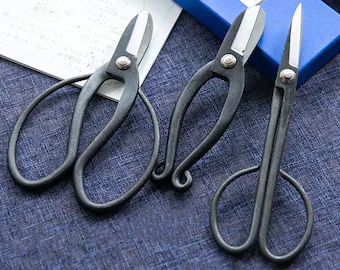
Hasami are scissors or clippers for flowers. They can cut anything, including flower stems to large branches, and are often constructed of steel. The secret to using ikebana scissors is to grasp the top handle within your forefinger and thumb and let the pressure of the bottom handle cause the bottom blade to fall open. Ikebana scissors do not have spring-loaded blades. Use leverage by inserting the branch deeply into the V inside the scissors while cutting heavy branches, being cautious not to pin your fingers between the handles.
Kenzan
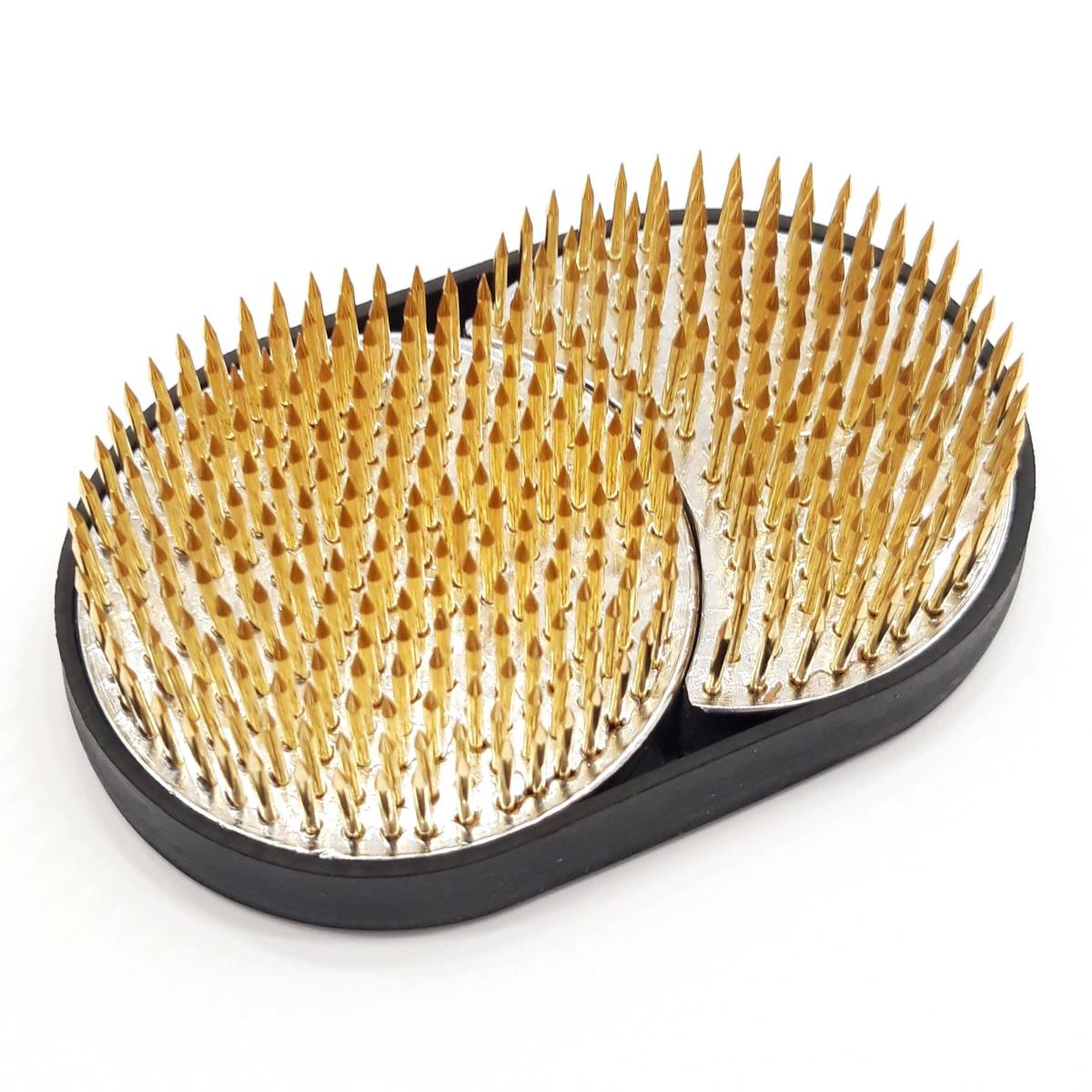
Since the tool is coated in spikes, the word “kenzan” literally translates to “sword mountain.” ‘Flower frogs’ is another name for kenzan. They aid in holding flowers in place in ikebana. The stems of the flowers, branches, and leaves are securely put into the kenzan to hold them in place.
To suit vases of various sizes and forms, kenzans are available in a wide variety of shapes. Round, rectangle, and sun & moon are a few typical shapes. The ‘sun and moon’ kenzan is composed of two sections that can be connected to form a single, sizable kenzan. To add weight to balance a tall object, the kenzan can be disassembled and the moon turned around to interlock with the sun kenzan. Also, they can used separately.
Kenzans are typically composed of metal, however recently resin and plastic have been used in their production. The suction mat for resin kenzans is made of plastic.
Pro tips: Other ikebana equipment and supplies include wire, wire cutters, kenzan pin straighteners, syringe pumps, trays, and supports.
The Fundamentals Ideas Behind Ikebana
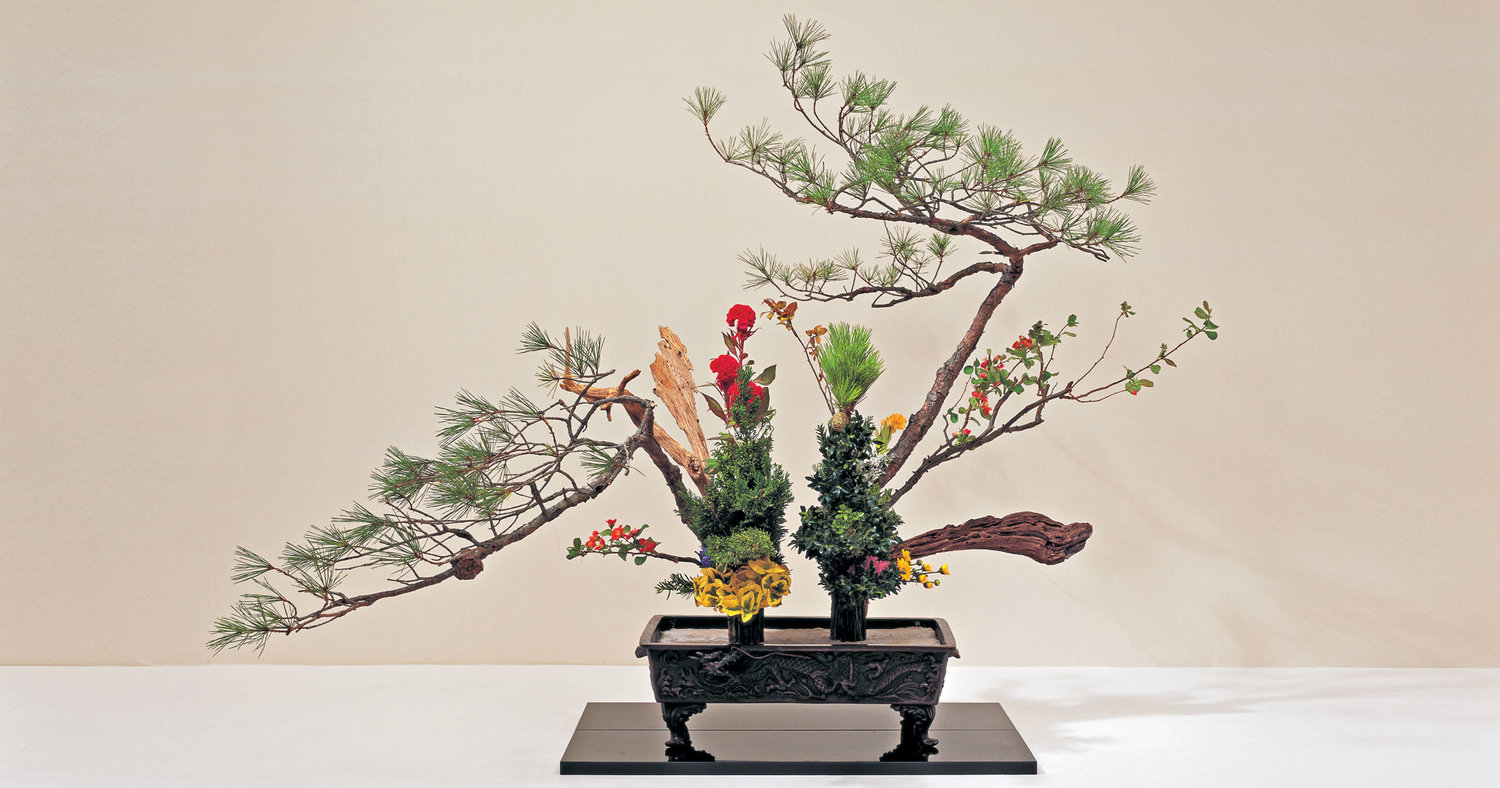
Although ikebana appears straightforward, its underlying theory is quite intricate. Ikebana examines the conflicts between the apparent and the intangible, means life and demise, elegance and simplicity from a philosophical standpoint.
It is a trained art form that unites nature and people and goes beyond merely arranging flowers in a vase.
1. Minimalist style
One frequent feature of ikebana is the elegant application of minimalism. Some techniques merely use a few blooms scattered amid stalks and foliage so that flowers can be appreciated more singly than collectively.
2. Focusing angles
Contrary to the concept of multicolored flower arrangements, ikebana frequently emphasizes the shape, line of sight, and form of other parts of the plant, including its stems and leaves. To help create the impression of a whole plant growing as closely to its natural conditions as possible, the water’s surface is always accessible.
3. Discovering the form
Ikebana absolutely forbids prior planning, despite the fact that this may seem contradictory. Arranging with the plants to bring out an existing shape is an important aspect of doing ikebana. Ikebana encourages practitioners to choose a few plant species and play with them rather than planning out a complex design in advance. Ikebana is a form of flower arrangement that is infinitely broad and profound, liberating and enjoyable since the personality of the person creating it is directly reflected in their work.
Ikebana Arrangements: A Lovely Improvement for Your Home
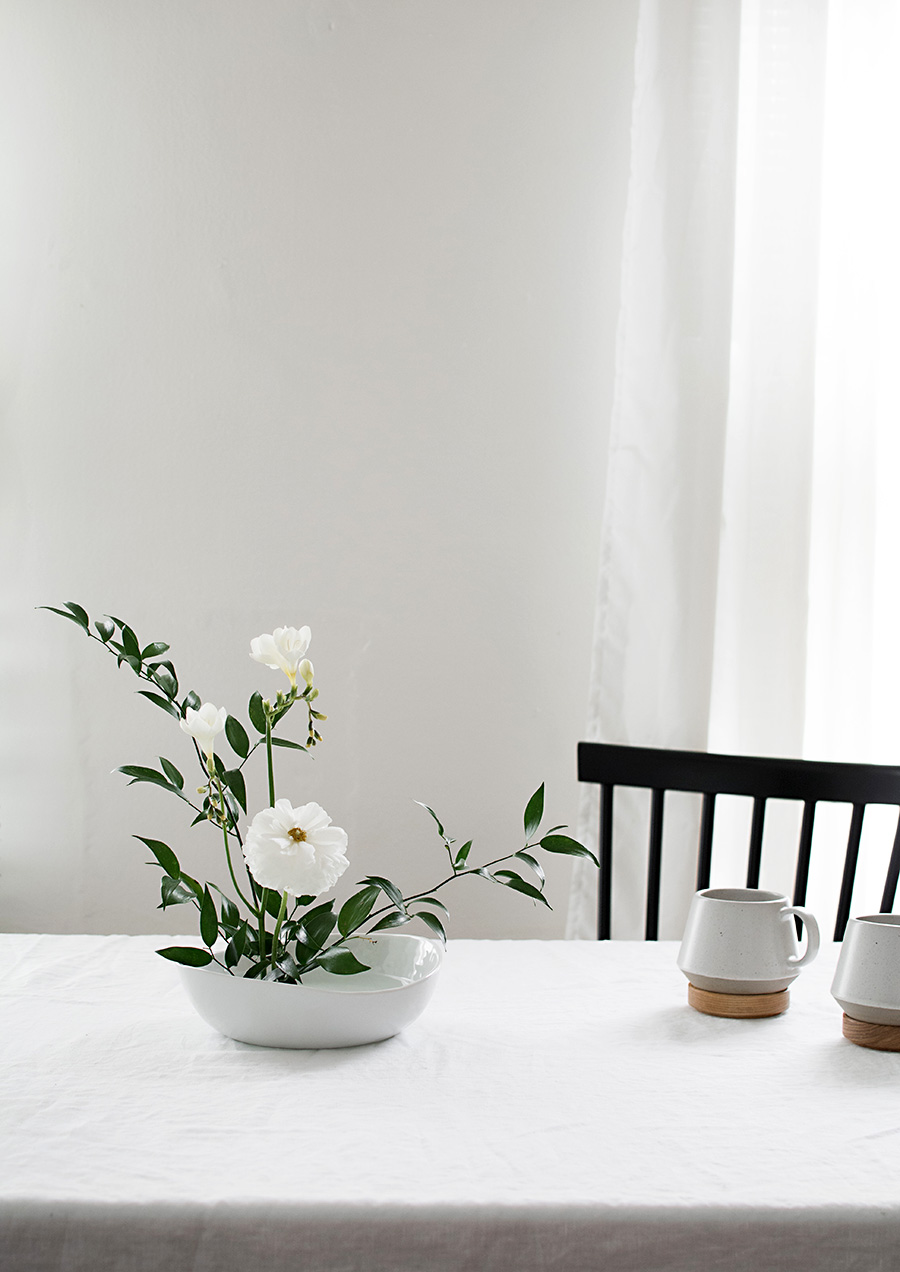
There are countless options when you combine the intricate artistry of a work of art with the vitality and freshness that flowers offer to your house. Having an ikebana and admiring their beauty can be deeply therapeutic. Keeping ikebana at your home enhance mood and stress management, providing instant benefits.
If you’re thinking of buying a condo. Choose a reputable one with a proven track record, such as Asterra, one of the best condo options in the entire country. Asterra is a place where urban conveniences coexist peacefully with pastoral charm. A place where better lives are built in greater homes.
Written by Mat Balbin

